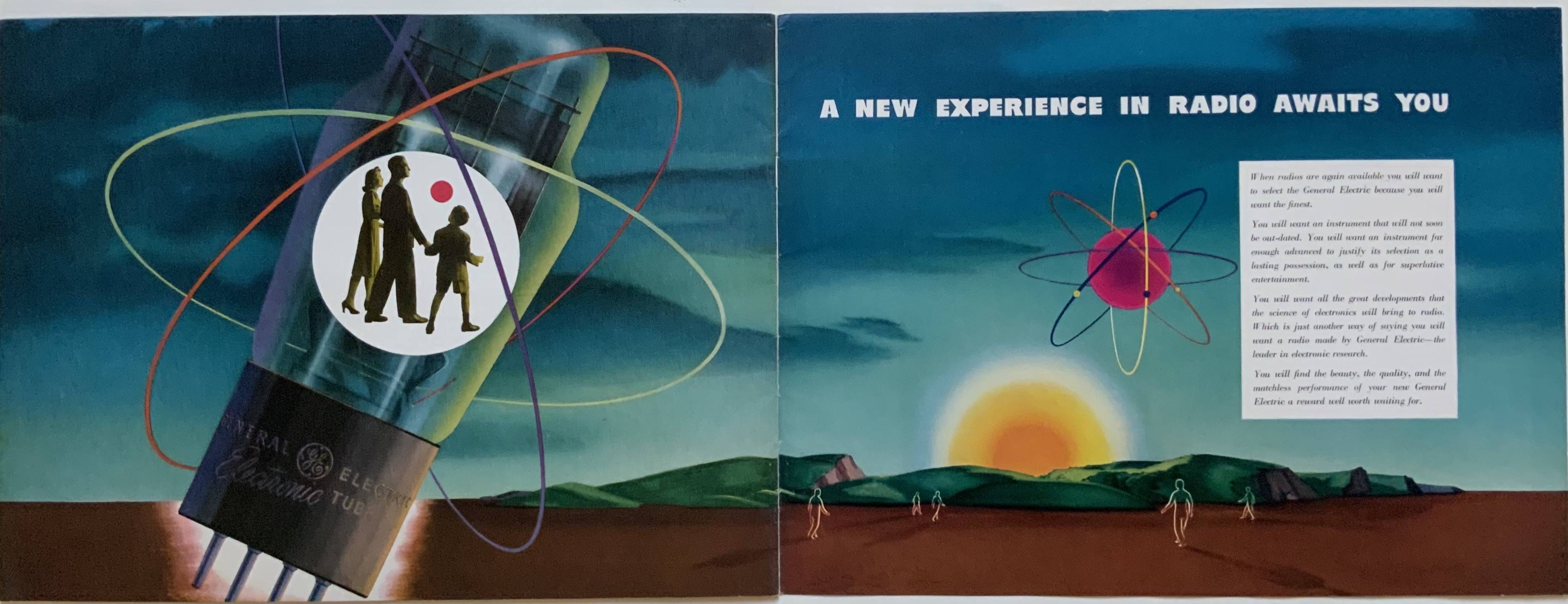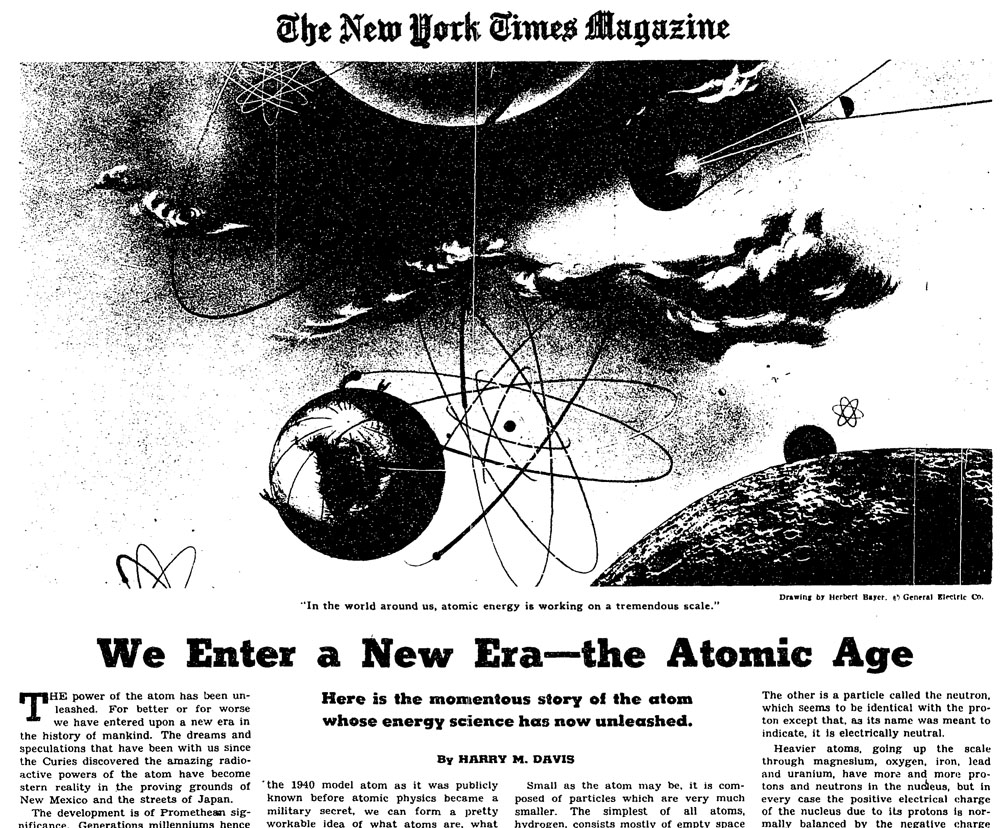Prompted by some strange answers from chatGPT, I googled "atomic energy artists 1940s", which led me via a Pinterest collection of images to Herbert Bayer.
Hebert Bayer provided an image for a New York Times article published on August 12, 1945 (six days after the US detonated the atomic bomb over Nagasaki, and three days before the Emperor of Japan announced surrender) titled "We enter a new era - the atomic age":
Source: https://blog.nuclearsecrecy.com/2012/08/17/the-end-of-the-nuclear-age/
The artist, Herbert Bayer, worked for General Electric and published a promotional booklet "Electronics, a new science for a new world" in 1942 containing this image:
Source: https://twitter.com/lett_arc/status/1373318441474605066
In a lower resolution view of the double page in the booklet, you can see the Bohr atomic model on the right:

Source: https://www.pinterest.co.uk/pin/57280226491896307/
One of the scientists shown in the collage (based on this photo) is Irving Langmuir, a physical chemist who worked at General Electric. He was fully up-to-date on the developments of quantum mechanics, having attended the 1927 Solvay conference. The first Langmuir prize, named after Irving Langmuir and financed by his brother, was awarded to Linus Pauling in Buffalo, NY in 1931 for applying quantum mechanics to chemical bonds. With this high-profile physical chemist at General Electric, it is surprising that Herbert Bayer chose to show electrons in orbits rather than illustrating the more accurate quantum mechanical description that was already used to understand chemistry and electronics.
One page of this booklet (reproduced in black and white in the NY Times article) shows some atoms with electrons in orbits of varying radius, while one atom (on the far right over the yellow planet or sun) is the now common depiction with three orbits of equal radius:
Source: https://www.worthpoint.com/worthopedia/ge-general-electric-electronics-1860813924
Another work by Herbert Bayer from 1942 advertises radios (to be available after war-time restrictions) from General Electric, also showing the atomic whirl.
 Source: https://miscman.com/product/j874your-coming-radio-as-forecast-by-general-electric/
Source: https://miscman.com/product/j874your-coming-radio-as-forecast-by-general-electric/
While there might be other earlier drawings, the booklet from a major company combined with the image in the New York Times Magazine probably helped popularize this representation of the atom. General Electric continued to use this symbol when they started to advertise its nuclear power plants years later.


